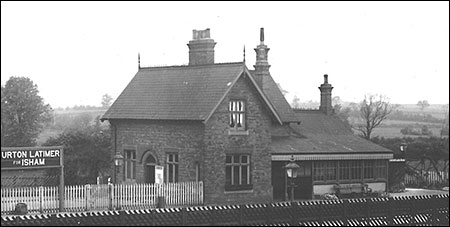|
|||
|
|||
|
During the 19th century, shoe & boot manufacturing was the main industry within the town, and the county. As with all trades, there was the opportunity to take advantage of certain situations. The nature of working practices of shoe manufacturing, with many employees working from home, could lead to temptation for the less honest workers. Such a case was reported in the Northampton Mercury in May 1865. Henry Coulton, shoemaker, was charged with purloining and embezzling a quantity of leather given out to him to make up a number of boots from Mr Shelton, boot and shoe manufacturer, of Higham Ferrers. Mr Sharpe, a resident of Burton Latimer said that he gave out work on behalf of Mr Shelton. Mr Sharpe knew the accused gave out work to complete uppers, soles, and inner soles to make twelve pairs of boots, but he only received six pairs. He then went to the house of the accused and found he had left Burton Latimer. Mr Sharpe visited once more a week later, the house was empty, but he found one pair of tops and two pairs of bottoms. The accused said that Mr Sharpe was mistaken in the number given out, for he had only six pairs by him when another six pairs were sent to the accused to be made up. Mr Sharpe replied that he was perfectly sure the prisoner had only completed six pairs when the twelve pairs had been requested and sufficient leather supplied. The magistrates were of the opinion that there was some difficulty in deciding the case. There appeared to be some discrepancy within the recording book, with different shades of ink and interlinings with pencil and the case was dismissed. However, the defendant was charged with a similar ofence from a previous date to which he pleaded guilty and was committed to two months' hard labour. During February 1867 the Mercury reported on another case of stolen leather. John Nichols, master mason and resident of Burton Latimer, was charged with having in his possesion a barrel containing eight pairs of boots, made up, and also a quantity of raw material. A short time earlier, there had been a extensive leather robbery from various addresses in Kettering, and police were instructed to be on the lookout at Isham Railway Station. On 20th January, PC Holdridge was at the Station, when a young boy, Thomas Cook, came down with a horse and cart and left a heavy parcel. After the boy had departed, the officer saw a barrel which had been taken from the cart, he examined the barrel and found a note - "Mr Nichols, boot maker, 59 Dale St, London". PC Holdridge then opened the barrel and placed it in the private offices of the station-master. It contained eight pairs of boots, made up and a quantity of leather at the bottom. Some of this spare leather was taken to Mr Harris, victim of the Kettering leather robbery, who identified it as his stock. After being informed of this, Mr Nichols said he had the leather two years ago; his brother in London had bought and paid for it. As he was sending his brother a quantity of boots, he felt that he would dispatch the rest of the leather back to him. Prisoner admitted that the barrel was his, but had no idea how it had got to the station. The boy Cook had been deposed to take the barrel to the station on instruction of the prisoner. William Symonds, leather cutter at Messr. Horn and Adams, identified the marked pieces of leather as their property, as did Mr Horn. The magistrates retired for consideration and upon returning said that the case was fraught with strong suspicion, but there were points which threw slight doubt in the matter and the felt that they should give prisoner the benefit of the doubt and dismiss the case. However, two summonses were taken out against Mr Nichols for having pieces of leather belonging to Mr Gotch of Kettering and Mr Shelton of Higham Ferrers and was bound over to appear in front of the magistrates at a later date. |
|||
